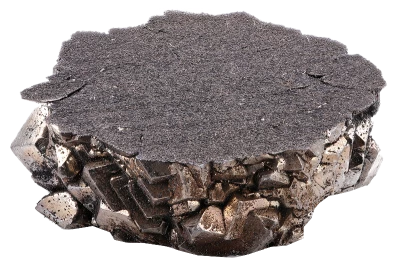Zirkon
We trade with metal scrap of the following alloys:
Zircon is a mineral from the mineral class of the "silicates and germanates" with the chemical composition Zr[SiO4] and thus chemically seen a zirconium silicate, which belongs structurally to the island silicates. Very typical are partly high contents of hafnium, uranium, thorium, yttrium, cerium and other rare earth elements (REE). Zirconium forms a complete solid solution series with its much rarer hafnium-dominant analogue hafnon. Reidite is a high-pressure modification of zircon.

Properties
Zirconium offers very good resistance in highly corrosive environments such as acids and alkaline solutions, as well as high toughness. Zirconium is easy to machine, good to weld and fully recyclable. It can be easily processed by rolling, forging and hammering.
Zirconium is passivated in air by a thin, very dense zirconium oxide layer and is therefore inert. It is therefore insoluble in almost all acids, only aqua regia and hydrofluoric acid attack zirconium at room temperature.
Application
Due to its high corrosion resistance, zirconium is a suitable construction material for chemical plants, especially for special apparatus parts such as valves, pumps, pipes and heat exchangers.
As an alloying additive to steel, it also increases the corrosion resistance. Surgical instruments, among other things, are manufactured from the corresponding alloys.
Applications
- Tank piping and heat exchangers in the chemical industry
- Cladding tubes for fuels in nuclear technology
- Instruments in medical technology
- Additives in steel production
In the Wikipedia is a List of authors available..
-
Zirconium Zr 700 is unalloyed zirconium with low oxygen content.UNS R60700Int. Normen Alloy Zr 700
-
Zirconium Zr 702 is an unalloyed zirconium.UNS R60702Int. Normen Alloy Zr 702
-
Zirconium Zr 704 is an alloyed zirconium alloy with additives of tin.UNS R60702Int. Normen Alloy Zr 704
-
Zirconium Zr 705 is an alloyed zirconium alloy with additives of niobium.UNS R60705Int. Normen Alloy Zr 705
